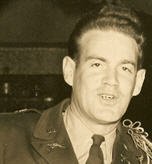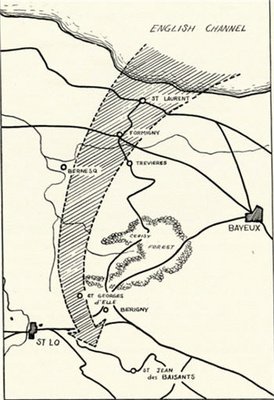DISCLOSURE: VT condemns the horrific tragedy committed by the NAZI Party against Jewish Citizens of Europe during Word War II known as the "Holocaust". VT condemns all racism, bigotry, hate speech, and violence. However, we are an open source uncensored journal and support the right of independent writers and commentors to express their voices; even if those voices are not mainstream as long as they do NOT openly call for violence. Please report any violations of comment policy to us immediately. Strong reader discretion is advised.

The Normandy Invasion – My Father’s Untold Story
It is unfortunate that in my 50’s I never paid more attention to or knew about my father’s contribution in WW II. It was not until my son brought me a suitcase full of their grandfather’s Army awards, certificates, pictures, and "campaign" books did I read further. Not to mention as a retired Naval Officer I should know better.
It is amazing as we get older we tend to migrate back to our family history and the important role it gives our lives.
This particular story of 2nd Battalion, 38th Infantry in WWII is amazing reading. Luckily, I found 36 pages of type written manuscript telling the story from pre-war, each hard fought battle, to eventual war end and shipping home at Camp Norfolk, France. These 36 pages proved to be compelling history of a generation slowly being forgotten. I have no way of knowing who kept this invasion "diary" or typed the document but my full credit goes to that brave individual or those brave personnel.
 The story of the Second Battalion, 38th Infantry Regiment in World War II begins quietly enough. It is well that we cannot look into the crystal ball of the future; that we did not see the long road ahead, the rough going. It is important only that we measured up to what we had to do. On the 28th of September 1943, Companies "E", "F", and Headquarters entrained at Camp McCoy, Wisconsin and arrived two days later at Camp Shanks, New York. Companies "G" and "H" followed by a day. On October 7, 1943, the entire battalion boarded the U.S.S. Florence Nightingale at the Staten Island, New York, Port of Embarkation, and debarked some thirteen days later at Belfast, North Ireland. By rail the battalion continued on to it billeting area at Newry, North Ireland.
The story of the Second Battalion, 38th Infantry Regiment in World War II begins quietly enough. It is well that we cannot look into the crystal ball of the future; that we did not see the long road ahead, the rough going. It is important only that we measured up to what we had to do. On the 28th of September 1943, Companies "E", "F", and Headquarters entrained at Camp McCoy, Wisconsin and arrived two days later at Camp Shanks, New York. Companies "G" and "H" followed by a day. On October 7, 1943, the entire battalion boarded the U.S.S. Florence Nightingale at the Staten Island, New York, Port of Embarkation, and debarked some thirteen days later at Belfast, North Ireland. By rail the battalion continued on to it billeting area at Newry, North Ireland.
The next six months in retrospection were pleasant ones. No officer or man who was in Ireland with the Battalion will forget frosty Camlough Mountain, the twenty five mile hikes through the picturesque countryside, the Newry Canal, the many small unit problems and the song "Galloway Bay".
On April 15, 1944, the Bn left Newry for Belfast to board the U.S.A.T. Santa Rosa which delivered the men some four days later at Cardiff, Wales; thence the battalion journeyed to Yestrad Camp in Carmanthenshire, Wales from where it left,
less company "G", on May 17, 1944 to go to St. Mellons Marshalling Camp, Wales.
Here it was the Bn’s good fortune to meet a future member, Lt Ackart.
When the battalion, less Company "G", left St. Mellons, it entrained at Marsh-field for Swansea where it embarked on board the U.S.A.T. General George S. Simonds on June 3, 1944.
Two days later, the transport set off for Northern France. The time was 2130 hours and not many more hours were to pass before the world was to be electrified by the Allied Invasion of the European continent. A day after the historic date of invasion, at 1700 hours June 7, the Battalion, minus Company "G" and transportation personnel, transferred from Personnel Carrier to LCI’s and went ashore on the coast of Northern France, near St. Laurent-surMer, on the hard and heroically won Omaha Beach.
What the battalion witnessed when it stepped out on the French Shore was an inferno, a holocaust of carnage, death and destruction. The dead lay everywhere, on the beach, floating by on the stained waters.
The debris of landing boats, the ruins of equipment, tanks, jeeps were strewn all about.
Death and destruction, these are the common sights of war’s fury. And although this was the first sight the men of the battalion were having of the chaos of war, they were too busy to brood about it; moreover the battle had not entirely receded from the beach; the element of danger still lay everywhere. For example, Company "F" ran into bad luck. Not only did their landing craft come under fire, but one platoon while wading ashore stepped
into a hole. One man was drowned, several were wounded and many weapons were lost. Here it was that Lt. McElroy won the first decoration to be given any man in the 38th Infantry Regiment – the Soldiers Medal for bravery in saving the lives of men in his platoon who would otherwise have drowned.
With surprisingly little confusion the Battalion moved piecemeal to an assembly area near St. laurent-sur-Mer, remained there on the 8th and on the next day to a bivouac area near Formigny where, on June 9, Company "G" finally joined. This same day at 0915 hours, the order to attack Treviers came down from higher headquarters. Treviers some four miles inland was one of the main enemy strong points. Its importance lay in the fact that it was squarely astride the 2d Divisions axis of communications, and had to be taken before any advance on the Cerisy Forest was possible.
It was a strange way to go into battle; the transportation had not yet joined, and with it were all the heavy weapons, the reserve ammunition supply, and even more important, the communications equipment. But in those early days, when we held only a strip upon the wide German-dominated continent, it was necessary to move quickly, secure more than a mere foothold on the beach so that it would be impossible for the enemy to ever drive us back into the sea as they boasted vauntingly. The battalion was undeterred, and vigorous and fresh, the men felt that they could beat anyone, any-place.
At 1200 hours, the battalion moved out to the attack it had picked up one Hvy MG and it would have to do. A single "300" radio would keep contact with Regimental Headquarters, while runners and the "536" radios would have to do for communications with the assault companies. The enemy was contacted at 1330 about one mile north of Treviers; here the battalion was to write its first battle page. Companies "E", "F", and "H" began the attack moving forward on a skirmish line; at 1600, Company "G" was called in to take position on the right flank, the battle throughout was fierce for the enemy was entrenched and in much greater strength than intelligence reports had indicated. The Battalions difficulties were also greatly magnified by a complete lack of communications equipment. Runners and personnel contact were the only means available. But the battle was never in doubt; the men were ready for it, and they were being led by their most able commander, Lt. Col. Jack K. Norris who in turn had the indispensable help of Capt Carl A. Martin and Capt Milton L. Manuel. It didn’t matter too much – the lack of automatic weapons; the men being trained; this was the meaning of strenuous training months in Louisiana, Wisconsin, and Ireland.
Into the night the battle raged; by 2315 hours, all of the battalion had been established in the northwest section of the town; by 0200 hours, June 10, Treivieres was completely ours. The attack had taken twelve and one half hours; made without benefit of any substantial heavy weapons and featured tough bayonet fighting and extensive use of grenades which were available only in the latter part of the fighting; and in this battle all had fought, clerks and kitchen men as well, and all had proved their mettle.
The cost of the Battalions first action had not been light – 9 enlisted men killed, 3 officers, and 35 enlisted men wounded, however, this first successful engagement proved to be a sound test and excellent initiation, giving confidence and experience to a yet untried unit. It is unfortunate though that Capt Wittkower was wounded in this action and did not return to the Battalion.
More to come…………..

ATTENTION READERS
We See The World From All Sides and Want YOU To Be Fully InformedIn fact, intentional disinformation is a disgraceful scourge in media today. So to assuage any possible errant incorrect information posted herein, we strongly encourage you to seek corroboration from other non-VT sources before forming an educated opinion.
About VT - Policies & Disclosures - Comment Policy



